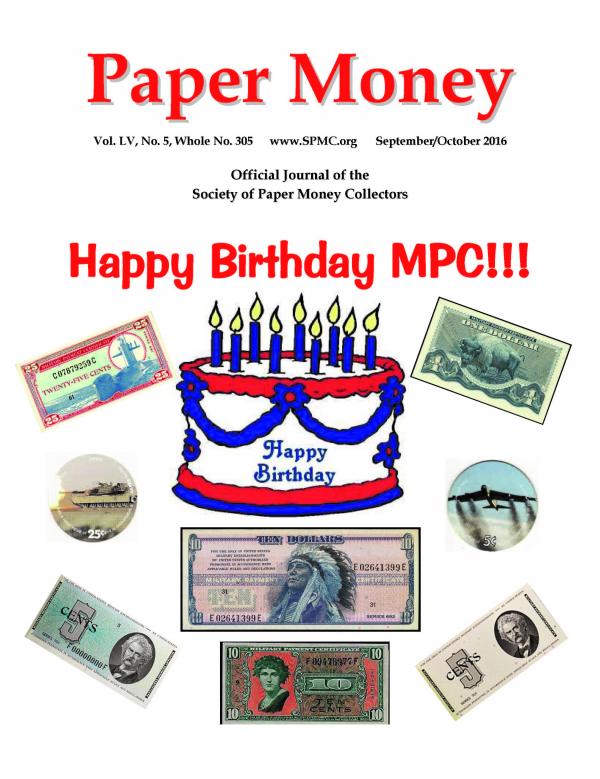Please sign up as a member or login to view and search this journal.

Table of Contents
Happy Birthday MPC--Joe Boling & Fred Schwan ............................................ 315
Stack’s Paymaster Auction Report--Fred Schwan............................................. 324
Populations of MPC Known in Collector’s Hands--Carlson Chambliss............. 328
AAFES Pogs--William Myers ............................................................................. 337
Fractional MPC--Benny Bolin ............................................................................. 340
3rd Example of Postage Currency Used as Postage--Rick Melamed ................. 345
Chester Krause ................................................................................................. 346
Post-Date Back Series of 1882 & 1902 NBN--Peter Huntoon ............................ 348
Series of 1886 Silver Dollar Back $5 Silver Certificates--Lee Lofthus ................ 352
Small Notes—Jamie Yakes .............................................................................. 360
Rise & Fall of John Parkman—Charles Derby ................................................... 365
Corp. of Richmond, VA Currency Notes—Josh Kelly ........................................ 381
Isaac Young and the Bank of St. Croix—Shawn Hewitt .................................... 379
Obsolete Corner—Robert Gill .......................................................................... 386
Interesting Mining Notes—David Schenkman ................................................ 388
President’s Message ......................................................................................... 391
Editor Sez .......................................................................................................... 392
Chump Change—Loren Gatch ........................................................................ 393
New Members ................................................................................................... 394


